
Lethal injection is the practice of injecting one or more drugs into a person for the express purpose of causing rapid death. The main application for this procedure is capital punishment, but the term may also be applied in a broader sense to include euthanasia and other forms of suicide. The drugs cause the person to become unconscious, stops their breathing, and causes a heart arrhythmia, in that order.
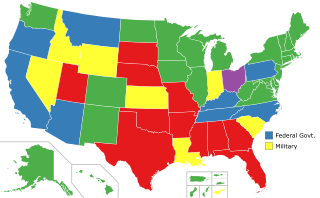
In the United States, capital punishment is a legal penalty throughout the country at the federal level, in 27 states, and in American Samoa. It is also a legal penalty for some military offenses. Capital punishment has been abolished in 23 states and in the federal capital, Washington, D.C. Capital punishment is, in practice, only applied for aggravated murder. Although it is a legal penalty in 27 states, only 20 states have the ability to execute death sentences, with the other seven, as well as the federal government, being subject to different types of moratoriums. The existence of capital punishment in the United States can be traced to early colonial Virginia. Along with Japan, South Korea, Taiwan, and Singapore, the United States is one of five advanced democracies and the only Western nation that applies the death penalty regularly. It is one of 54 countries worldwide applying it, and was the first to develop lethal injection as a method of execution, which has since been adopted by five other countries. The Philippines has since abolished executions, and Guatemala has done so for civil offenses, leaving the United States as one of four countries to still use this method. It is common practice for the condemned to be administered sedatives prior to execution, regardless of the method used.

Capital punishment is a legal penalty in the U.S. state of Ohio, although all executions have been suspended indefinitely by Governor Mike DeWine until a replacement for lethal injection is chosen by the Ohio General Assembly. The last execution in the state was in July 2018, when Robert J. Van Hook was executed via lethal injection for murder.
Capital punishment is a legal penalty in the U.S. state of Oklahoma.

Midazolam, sold under the brand name Versed among others, is a benzodiazepine medication used for anesthesia and procedural sedation, and to treat severe agitation. It works by inducing sleepiness, decreasing anxiety, and causing a loss of ability to create new memories. The drug does not cause an individual to become unconscious, merely to be sedated. It is also useful for the treatment of prolonged seizures. Midazolam can be given by mouth, intravenously, by injection into a muscle, by spraying into the nose, or through the cheek. When given intravenously, it typically begins working within five minutes; when injected into a muscle, it can take fifteen minutes to begin working. Effects last between one and six hours.

The Oklahoma State Penitentiary, nicknamed "Big Mac", is a prison of the Oklahoma Department of Corrections located in McAlester, Oklahoma, on 1,556 acres (6.30 km2). Opened in 1908 with 50 inmates in makeshift facilities, today the prison holds more than 750 male offenders, the vast majority of which are maximum-security inmates.
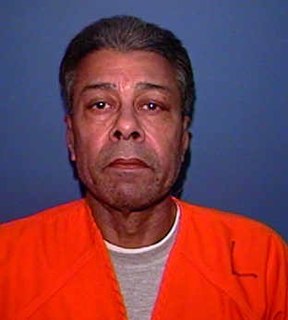
Ángel Nieves Díaz was a Puerto Rican convict and a suspected serial killer who was executed by lethal injection by Florida. Nieves, who had escaped from a prison in Puerto Rico while serving time for murder, was convicted of shooting and killing the manager of a strip club in Florida in 1979. He maintained his innocence until his death.

Genaro Ruiz Camacho, Jr., aka Geno Camacho, was a cannabis dealer and organized crime leader in Texas who was linked to four murders and eventually executed by the state of Texas.
Participation of medical professionals in American executions is a controversial topic, due to its moral and legal implications. The practice is proscribed by the American Medical Association, as defined in its Code of Medical Ethics. The American Society of Anesthesiologists endorses this position, stating that lethal injections "can never conform to the science, art and practice of anesthesiology".
Romell Broom was an American death row inmate who was convicted of murder, kidnapping and rape. He was sentenced to death for the 1984 murder of 14-year-old Tryna Middleton. Broom was scheduled to be executed on September 15, 2009, but after executioners failed to locate a vein he was granted a reprieve. A second execution attempt was scheduled for June 2020, which was delayed until March 2022. Broom died in prison before the sentence could be carried out.
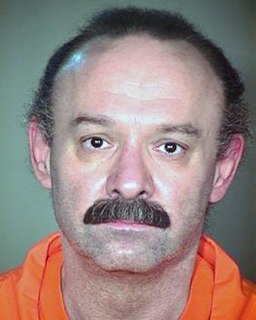
Joseph Rudolph Wood III was an American convicted murderer executed on July 23, 2014, at Florence State Prison in Arizona, with a two-hour lethal injection procedure that was described as "botched". Wood gasped and snorted for an hour and fifty-seven minutes after the drugs were injected, and the entire procedure took almost two hours; experts said the execution should have taken about ten minutes.
Glossip v. Gross, 576 U.S. 863 (2015), was a United States Supreme Court case in which the Court held, 5–4, that lethal injections using midazolam to kill prisoners convicted of capital crimes do not constitute cruel and unusual punishment under the Eighth Amendment to the United States Constitution. The Court found that condemned prisoners can only challenge their method of execution after providing a known and available alternative method.
Richard Eugene Glossip is an American prisoner currently on death row at Oklahoma State Penitentiary after being convicted of commissioning the 1997 murder of Barry Van Treese. The man who murdered Van Treese, Justin Sneed, had a "meth habit" and agreed to plead guilty in exchange for testifying against Glossip. Sneed received a life sentence without parole. Glossip's case has attracted international attention due to the unusual nature of his conviction, namely that there was little or no corroborating evidence, with the first case against him described as "extremely weak" by the Oklahoma Court of Criminal Appeals.

Doyle Lee Hamm was an American death row inmate in Alabama, who was convicted and sentenced to death for the 1987 murder of Patrick Cunningham, whom he killed while committing a robbery. While on death row, Hamm developed lymphatic cancer, which made it difficult to impossible to achieve the venous access necessary to administer the drugs used in lethal injections. Despite months of warning by Hamm's attorney and human rights observers and a decades' long legal battle, the Alabama Department of Corrections attempted to execute Hamm on February 22, 2018. The unsuccessful execution attempt lasted nearly three hours and drew international attention. In March 2018, Hamm and the state of Alabama reached a confidential settlement, the terms of which precluded a second execution attempt, giving Hamm a de facto sentence of life in prison without the possibility of parole, although his sentence was not formally commuted. Hamm remained in prison until his death from cancer-related complications in 2021.
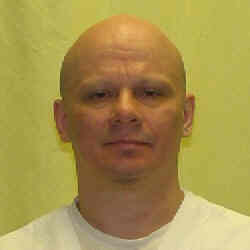
The execution of Robert Van Hook occurred on July 18, 2018, at the Southern Ohio Correctional Facility in Lucasville, Ohio. Van Hook was executed via lethal injection for the 1985 murder of 25-year-old David Self. His case achieved notoriety because of his failed gay panic defense. Ultimately, his conviction was upheld by the U.S. Supreme Court and Governor John Kasich of Ohio rejected his bids for clemency.
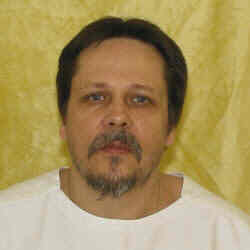
The execution of Dennis McGuire occurred on January 16, 2014, at the Southern Ohio Correctional Facility in Lucasville, Ohio, in what was considered to be a botched execution. McGuire was executed via lethal injection using a new combination of untried and untested drugs: midazolam and hydromorphone. During the execution, witnesses reported that McGuire could be seen struggling to breathe, and reportedly gasped loudly while making snorting and choking sounds for at least ten minutes. It took over twenty-five minutes for McGuire to die, in a process that should normally take just over eight minutes.

The execution of John Grant took place in the U.S. state of Oklahoma by means of lethal injection. Grant was sentenced to death for the 1998 murder of prison cafeteria worker Gay Carter.
Gilbert Ray Postelle was an American mass murderer who was sentenced to death and executed for his involvement in a quadruple murder in Oklahoma. He was executed on February 17, 2022, by lethal injection.

Glossip v. Chandler is a United States District Court for the Western District of Oklahoma case in which the plaintiffs challenged the State of Oklahoma's execution protocol. The initial lawsuit, Glossip v. Gross, rose to the United States Supreme Court in 2015 at the preliminary injunction stage and involved an earlier version of Oklahoma's lethal injection protocol. The case was reopened in the District Court in 2020 following an end to Oklahoma's moratorium on executions.














